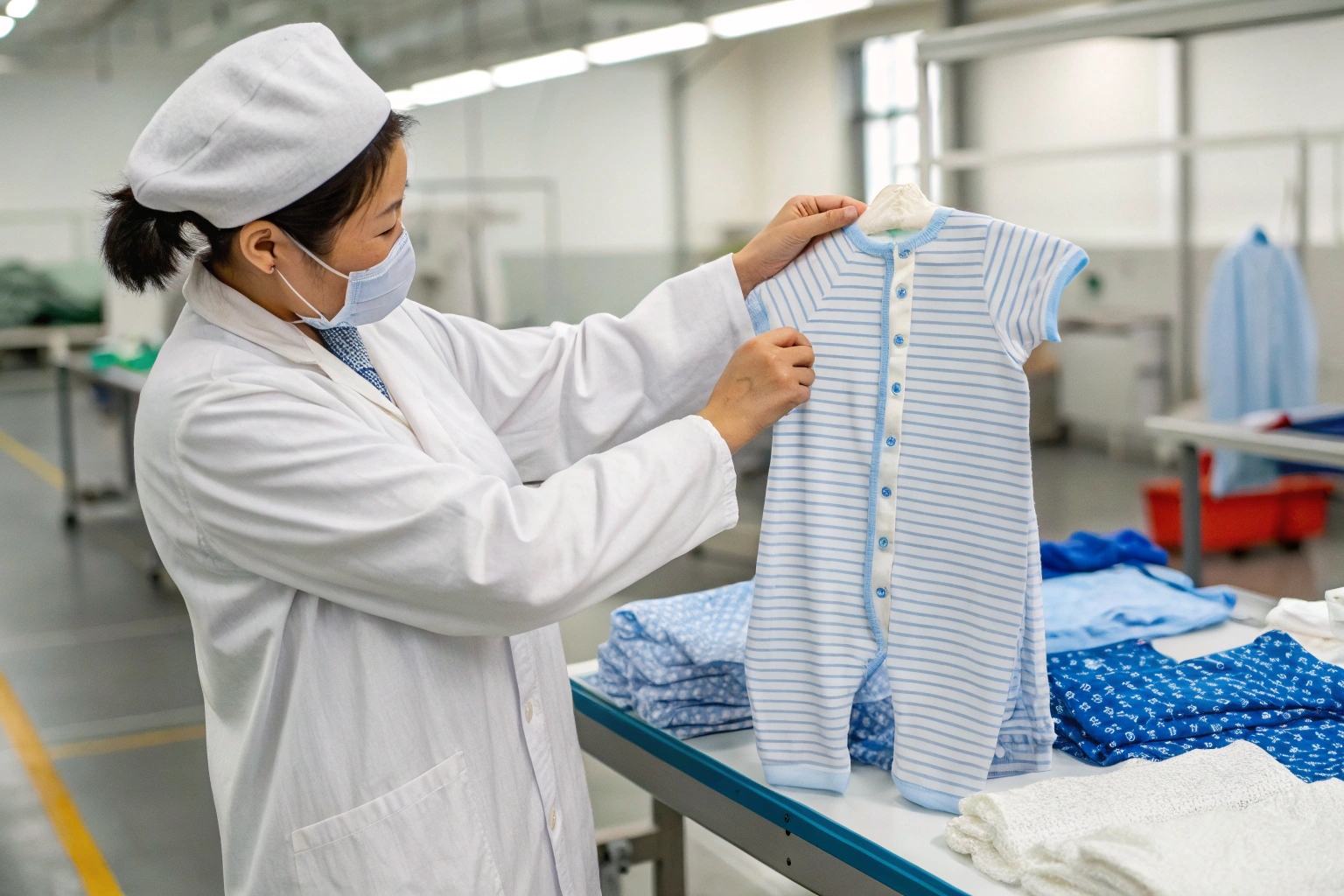Selling babywear across borders isn’t just about cute designs and soft fabrics—it’s about meeting strict safety standards to protect infants and satisfy regulators.
To sell babywear internationally, brands must pass key safety tests related to chemical content, flammability, choking hazards, and labeling—verified by certified third-party labs.
Here’s a complete guide to the essential certifications, global regulations, and testing processes required for export-ready infant clothing.
What Safety Certifications Are Needed for Babywear Exports?
Babywear touches sensitive skin, includes small parts, and is often worn for hours—making certification essential for market access and consumer trust.
Required babywear certifications vary by region but typically include OEKO-TEX® for chemical safety, CPSIA for U.S. law compliance, and EN 14682 for EU garment safety.
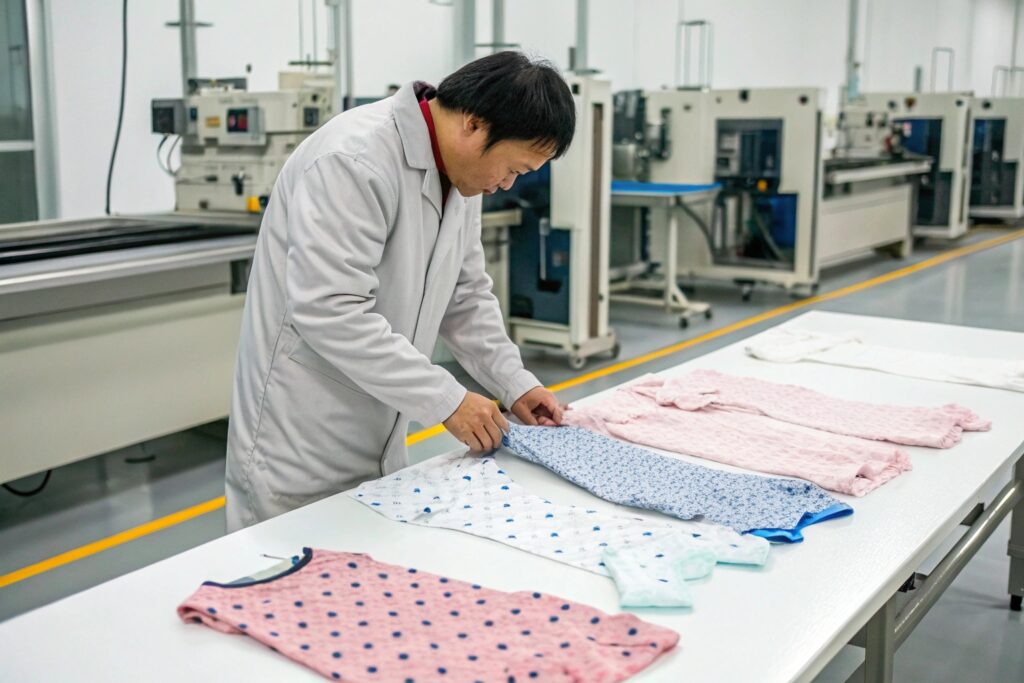
Key certifications by market:
| Certification | Region | Purpose |
|---|---|---|
| CPSIA | United States | Ensures child safety (lead, phthalates, tracking labels) |
| EN 14682 | European Union | Regulates cords/drawstrings on babywear |
| OEKO-TEX® Standard 100 | Global | Tests for harmful substances in fabrics |
| GOTS | Global | Verifies organic fiber + social compliance |
| ASTM F1816 | United States | Sleepwear flammability requirements |
| REACH | European Union | Controls chemical substances used in textiles |
Some large retailers or marketplaces may also require factory audits (e.g., BSCI, SEDEX) and lab test reports with each shipment.
Startups should ask suppliers whether their production is already pre-certified—many Canton Fair vendors provide ready-to-export options with required documentation.
How to Meet CPSIA, EN 14682, and Other Global Standards?
Passing testing is not enough—you must meet full compliance, including product labeling, traceability, and documentation for customs clearance.
To meet international babywear safety standards, your product must pass physical and chemical tests, include compliant labels, and be traceable by production batch.
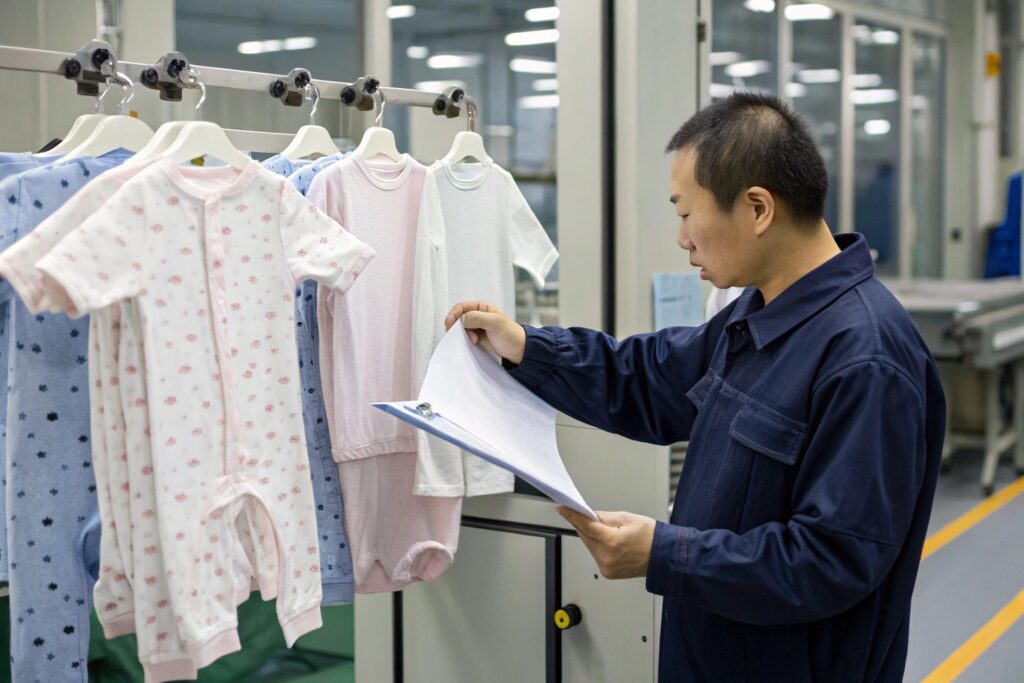
Breakdown of standard requirements:
| Standard | What’s Required |
|---|---|
| CPSIA (U.S.) | Lead & phthalate tests, tracking labels, small parts rules |
| EN 14682 (EU) | No cords in hood/neck area for 0–7 years |
| ASTM F1816 | Sleepwear must be flame-resistant or snug-fitting |
| REACH (EU) | Dye/chemical limits (e.g., azo dyes, formaldehyde) |
| GOTS/OEKO-TEX® | Fabric, trims, and production must be tested/certified |
Practical tips:
- Always ask your supplier if products are pre-tested for CPSIA or EN standards
- For custom designs, budget 1–3 weeks for lab testing after samples are complete
- Label every product with a tracking number, size, care instructions, and country of origin
At Fumao, we prepare CPSIA tracking labels and offer batch-level OEKO-TEX® testing for every production run.
What Labs Test for Chemical Safety and Flammability?
Only accredited labs are recognized by customs and retailers—so choosing the right partner matters.
Chemical safety, flammability, and mechanical tests for babywear must be conducted by certified labs like SGS, Intertek, TÜV SÜD, or BV (Bureau Veritas).
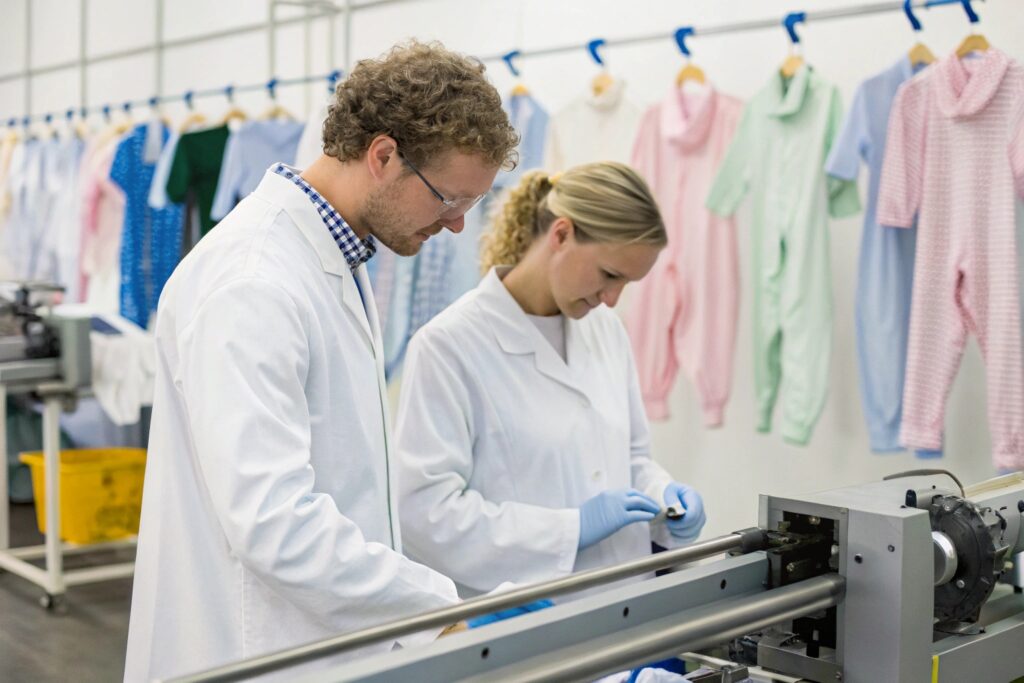
Top testing labs and what they offer:
| Lab Name | Key Services for Babywear |
|---|---|
| SGS | CPSIA, REACH, flammability, textile pH |
| Intertek | OEKO-TEX®, ASTM, physical testing |
| TÜV SÜD | Chemical analysis, GOTS audits, small parts testing |
| Bureau Veritas | EN 14682, trim pull tests, labeling review |
| QIMA | Asia-based compliance, factory audits |
What they test:
- Lead, phthalates, formaldehyde
- Flammability (for sleepwear)
- Mechanical safety (snaps, buttons, zippers)
- Seam strength, shrinkage, colorfastness
- Labeling and care instruction compliance
Turnaround time varies, but most results return in 5–7 business days. Rush testing may cost more but is available for urgent orders.
Tips for Ensuring Fabric, Trim, and Labeling Compliance?
A fully compliant babywear item isn’t just about the fabric—it includes every button, thread, label, and even packaging.
To ensure full product compliance, test all components (fabric, trims, zippers), use approved labeling, and work with certified suppliers from the start.
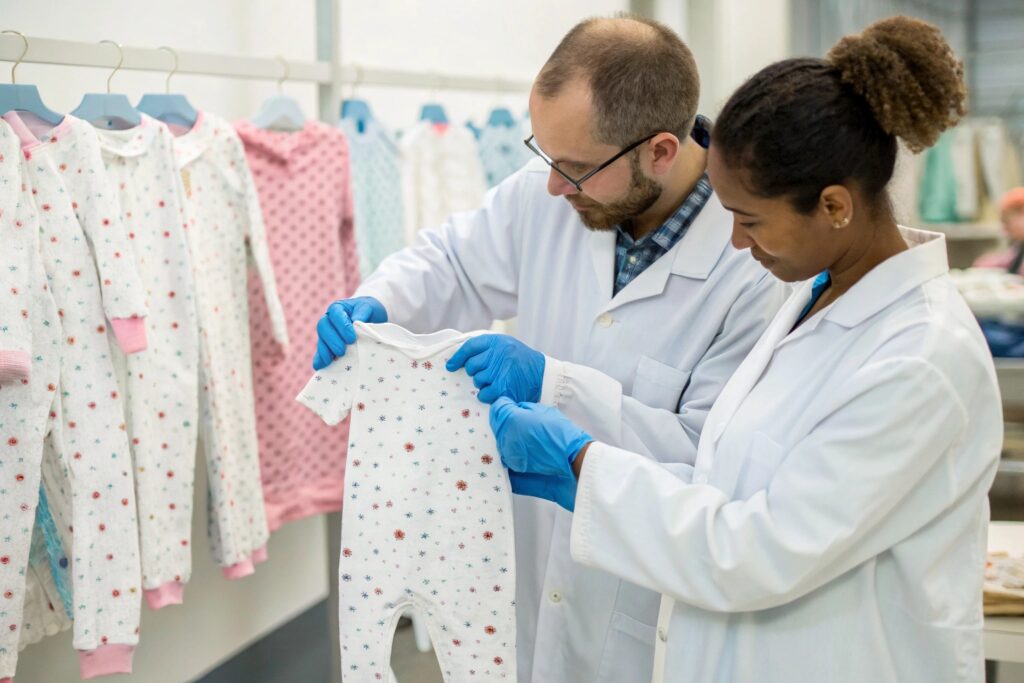
Full compliance checklist:
| Component | What to Do |
|---|---|
| Fabric | Must be free of harmful chemicals (OEKO-TEX®/GOTS preferred) |
| Trims (snaps, buttons) | Run pull tests; ensure no choking hazard |
| Thread & dyes | Should comply with REACH or CPSIA dye limits |
| Elastic/waistbands | Should not roll or expose elastic directly to skin |
| Labels | Must include size, fiber content, care symbols, tracking info |
Helpful practices:
- Run pre-shipment inspection for random product pulls
- Test every new material lot if using multiple vendors
- Keep test reports and compliance documents for 3–5 years
At Fumao, we provide clients with a compliance file that includes lab reports, inspection photos, tracking label samples, and signed conformity declarations.
Conclusion
Selling babywear globally requires more than good design—it requires proven safety. With certified labs, clear documentation, and a proactive testing process, your brand can meet global standards and earn the trust of parents and retailers alike. When in doubt, test—and test again.

